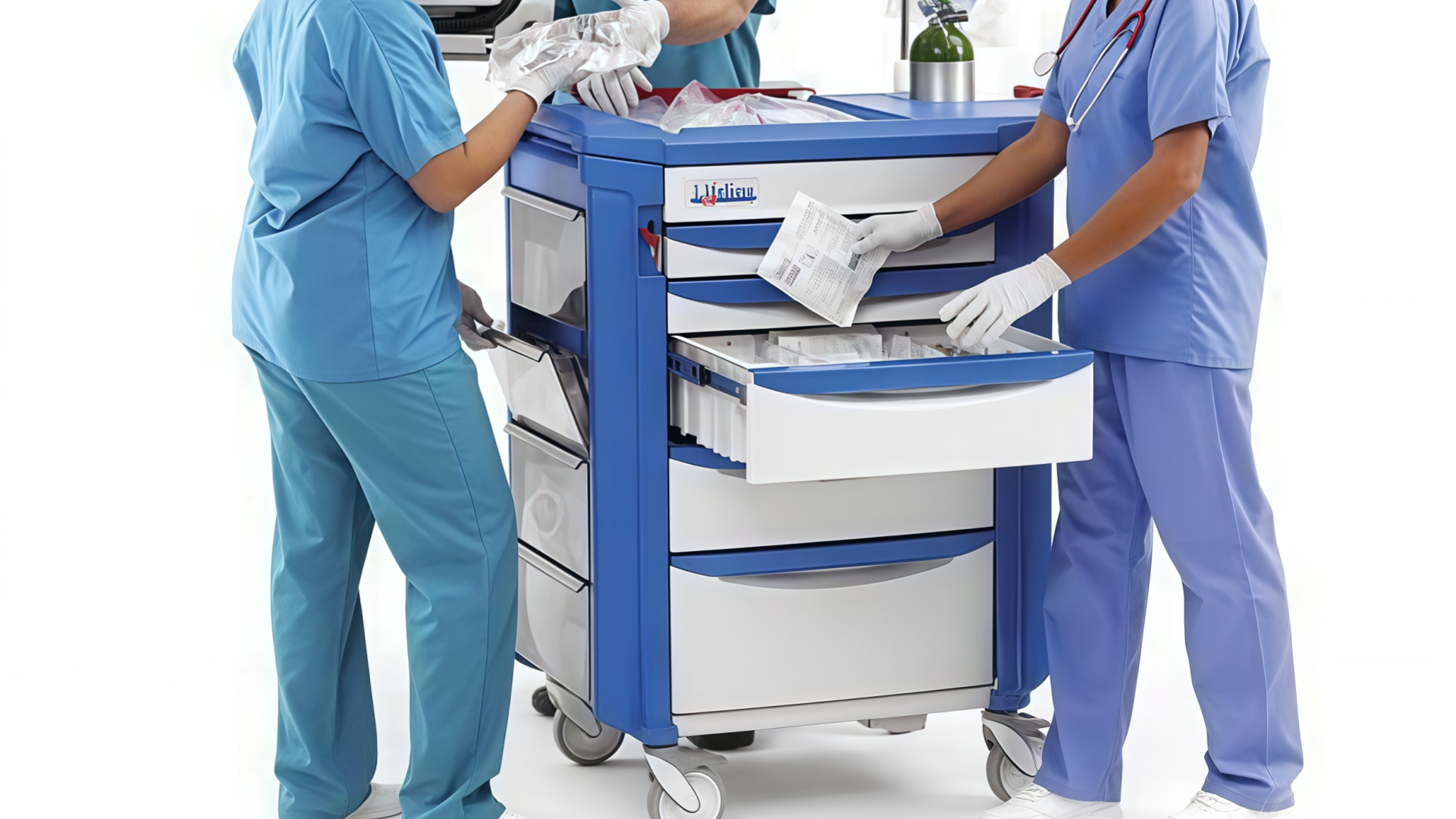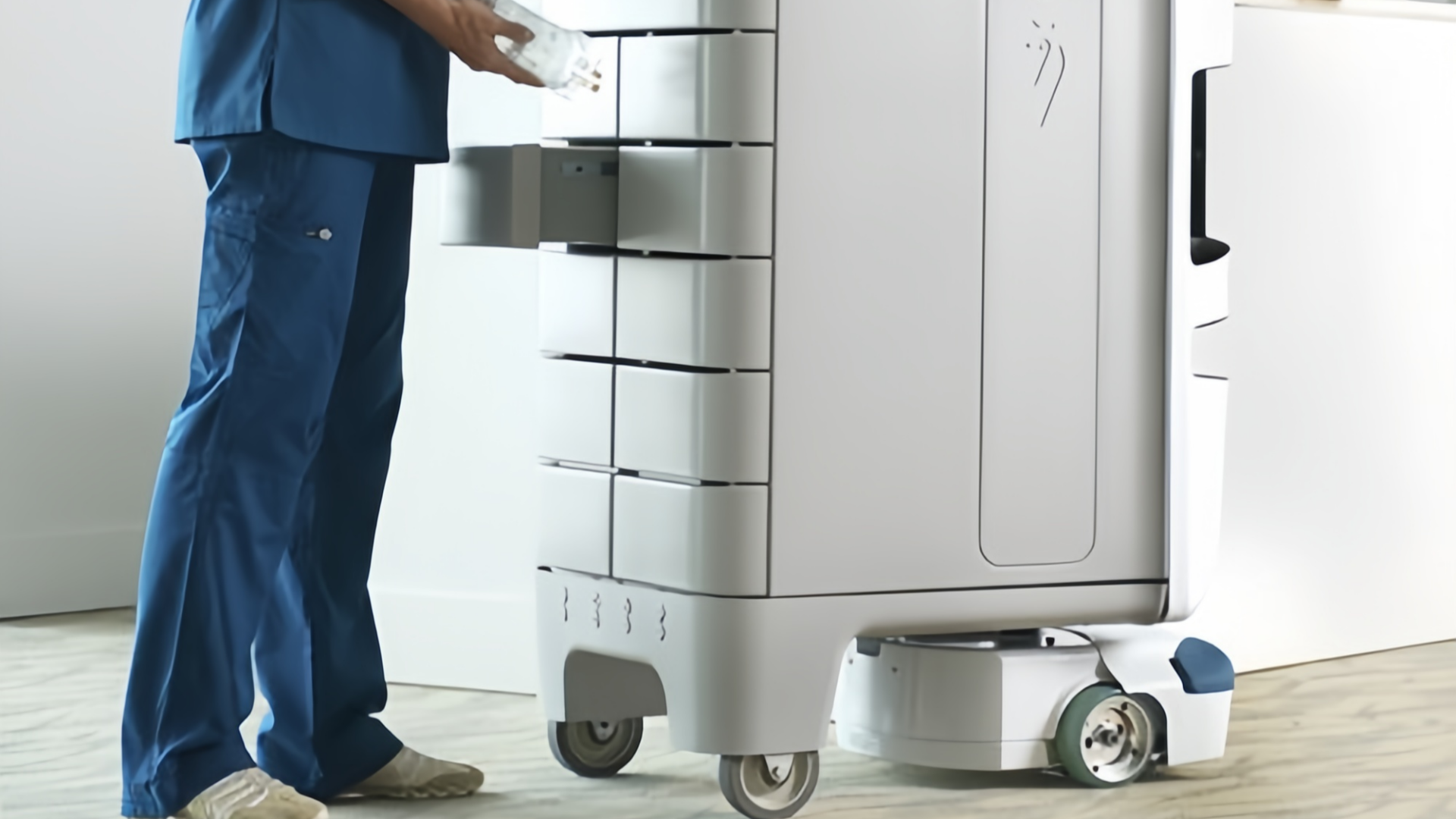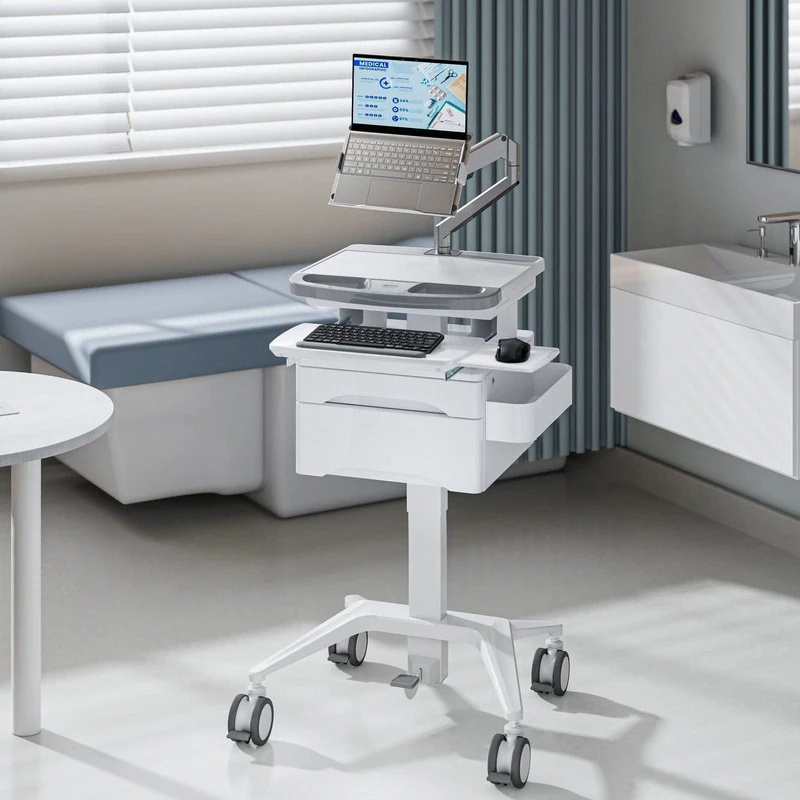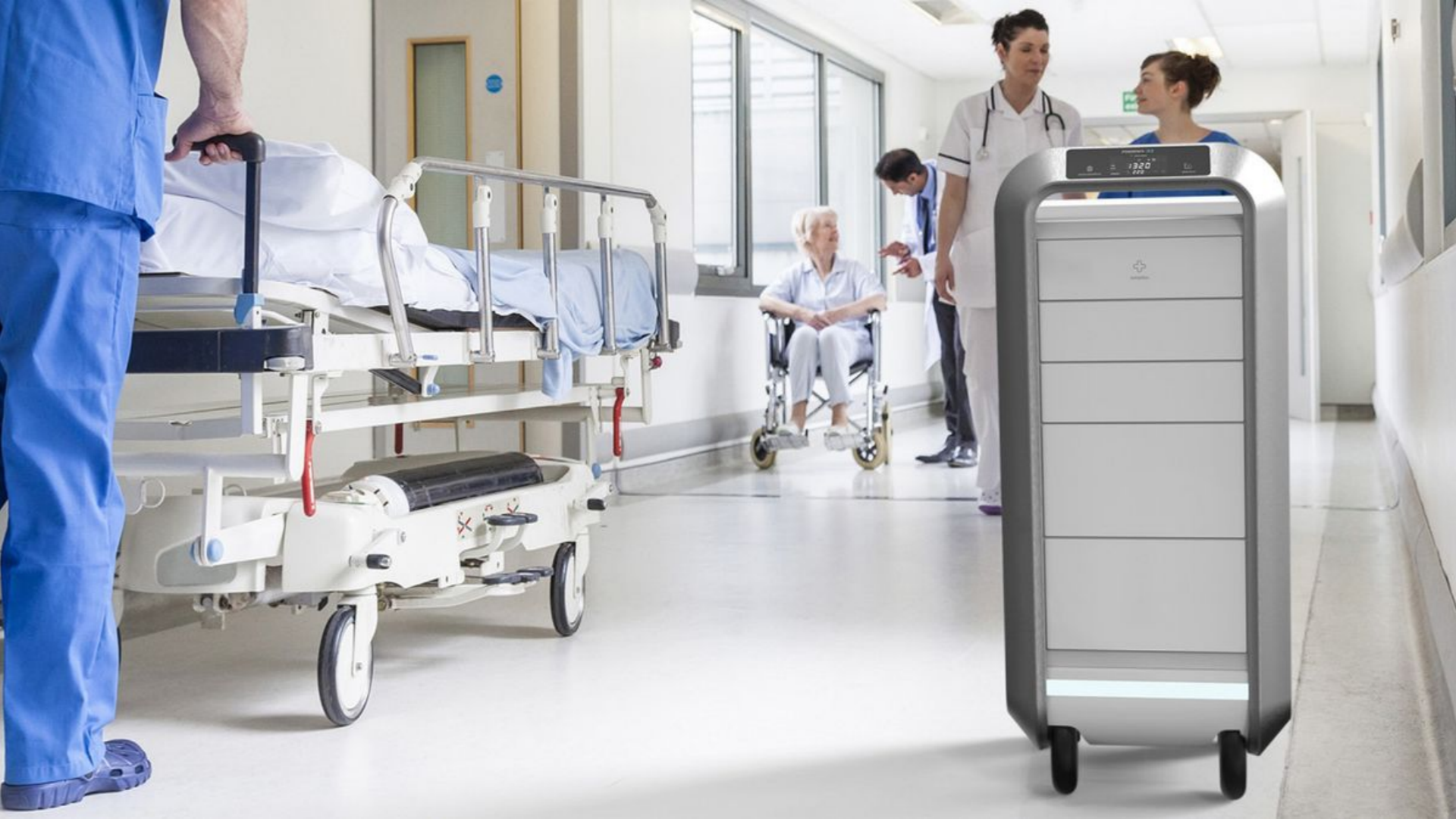Views: 0 Author: Site Editor Publish Time: 2025-08-21 Origin: Site








A medical cart is a mobile workstation designed specifically for healthcare environments to transport, organize, and secure medical equipment, supplies, medications, and technology at the point of care. These versatile healthcare mobile solutions have become indispensable tools in modern medical facilities, serving as rolling command centers that bring everything healthcare professionals need directly to patients while maintaining organization, security, and efficiency standards required in clinical settings.

Medical carts represent a fundamental evolution in healthcare delivery, transforming how healthcare providers access and manage resources during patient care. From emergency response situations where every second counts to routine patient rounds requiring precise medication administration, these mobile workstations serve as the backbone of efficient healthcare operations across hospitals, clinics, long-term care facilities, and specialized medical environments.
This comprehensive guide explores the essential aspects of medical carts, including their diverse types and specialized applications, key features and technological innovations, operational benefits and workflow improvements, cost considerations and selection criteria, and future trends shaping medical cart development. Healthcare administrators, clinical staff, and procurement professionals will gain actionable insights for selecting, implementing, and maximizing the value of medical cart solutions in their facilities.
The medical cart industry encompasses numerous specialized categories, each designed to address specific healthcare workflows, regulatory requirements, and operational challenges. Understanding these categories enables healthcare facilities to select appropriate cart solutions that optimize both efficiency and patient outcomes.

Emergency and Crash Carts represent the most critical category of medical carts, designed for rapid response situations where immediate access to life-saving equipment and medications can determine patient outcomes. These emergency response carts feature standardized organization with the most frequently needed supplies positioned in top drawers, descending in priority order. Equipment typically includes defibrillators, intubation supplies, central line catheters, emergency medications, and cardiac monitors mounted on the cart's exterior for immediate accessibility.
Pediatric crash carts constitute a specialized subset featuring smaller-sized equipment, pediatric-specific medications with appropriate dosing charts, and colorful designs that reduce anxiety for young patients. The complexity of pediatric care requires height and weight-based dosing calculations, making these carts essential for facilities treating children.
Medication Administration Carts focus on secure storage and controlled dispensing of pharmaceuticals throughout healthcare facilities. These medication carts incorporate multiple locking mechanisms, automated dispensing technology, and organized storage systems that support the "five rights" of medication administration: right patient, drug, dose, route, and time. Electronic locking systems with RFID or keypad access ensure medication security while maintaining detailed audit trails for regulatory compliance.
Anesthesia Carts serve operating rooms and procedural areas with specialized storage for anesthetic agents, controlled substances, and monitoring equipment. These carts often feature distinctive blue drawers or identifiers and incorporate security features appropriate for controlled substance storage. MRI-compatible anesthesia carts use non-ferrous materials to safely operate in magnetic resonance imaging environments.
Computer and Technology Carts integrate mobile computing capabilities with healthcare workflows, enabling electronic health record access, patient monitoring, and real-time documentation at the point of care. These workstations on wheels (WOWs) feature height-adjustable surfaces, secure computer mounting, cable management systems, and battery power for extended mobility. Advanced models incorporate touchscreen interfaces, barcode scanners, and telemedicine capabilities.
Table 1: Medical Cart Categories and Primary Applications
| Cart Type | Primary Use Environment | Key Features | Typical Load Capacity |
Emergency/Crash Carts | ICU, Emergency Departments, General Wards | Defibrillator mount, organized drawers, rapid access | 200-300 lbs |
Medication Carts | Patient floors, pharmacies, long-term care | Electronic locks, controlled access, audit trails | 150-250 lbs |
Anesthesia Carts | Operating rooms, procedure suites | Blue identification, controlled substance security | 250-350 lbs |
Computer Carts | All patient care areas | Height adjustment, battery power, monitor mounts | 100-200 lbs |
IV/Treatment Carts | Patient rooms, treatment areas | Height-adjustable poles, supply storage | 75-150 lbs |
Specialty Application Carts address unique clinical requirements across diverse healthcare environments. Isolation carts support infection control protocols with easily cleanable surfaces and sealed storage compartments. Phlebotomy carts organize blood draw supplies and specimen collection materials. Wound care carts transport specialized dressing supplies and treatment equipment directly to patient bedsides.
Real-world application examples demonstrate the versatility and impact of specialized medical carts:
Mayo Clinic utilizes customized emergency carts with facility-specific organization standards, reducing code response times by 15% through improved equipment accessibility and standardized layouts across all units.
Cleveland Clinic deployed computer carts with integrated telehealth capabilities during the COVID-19 pandemic, enabling remote consultations while maintaining social distancing protocols and reducing exposure risks for healthcare workers.
Texas Children's Hospital implemented colorful pediatric carts with child-friendly designs and specialized pediatric equipment sizing, improving patient cooperation during procedures and reducing anxiety-related complications.
Johns Hopkins Hospital developed isolation carts with antimicrobial surfaces and sealed compartments for COVID-19 patient care, supporting infection control protocols while maintaining necessary supply access for clinical staff.
Kaiser Permanente facilities use standardized medication carts with electronic dispensing systems across their network, reducing medication errors by 30% through consistent technology implementation and standardized workflows.
Modern medical cart design incorporates sophisticated engineering solutions that balance functionality, durability, safety, and regulatory compliance. Understanding these design elements enables healthcare facilities to evaluate cart options effectively and select solutions that support long-term operational success.
Construction Materials and Durability form the foundation of medical cart performance. Aluminum construction offers optimal strength-to-weight ratios, enabling high load capacity while maintaining maneuverability. Fully welded uni-body construction provides superior structural integrity compared to assembled alternatives. Stainless steel components in high-stress areas ensure longevity under demanding usage conditions.
Antimicrobial surface treatments have become standard features, with materials like Microban antimicrobial protection integrated into plastic components to reduce microbial growth between cleaning cycles. Rounded corners and seamless construction facilitate thorough cleaning and disinfection protocols required in healthcare environments.
Mobility and Maneuverability Systems directly impact cart functionality and user satisfaction. Premium carts feature dual-wheel swivel casters with total engagement braking systems that lock both wheel rotation and swivel movement simultaneously. Fifth-wheel technology on emergency carts provides enhanced maneuverability during crisis situations when precise positioning can be critical.
Security and Access Control features protect valuable medications and equipment while supporting regulatory compliance. Electronic pushbutton locks offer programmable access codes with audit trail capabilities. RFID proximity card systems enable personalized access control with detailed usage tracking. Tamper-evident seals on emergency carts ensure immediate identification of unauthorized access.

Ergonomic Design Features reduce physical strain on healthcare workers during extended shifts. Height-adjustable work surfaces accommodate users of varying statures and support sit-to-stand workflow transitions. Curved protective bumpers prevent damage to walls and equipment while providing comfortable grip surfaces. Ergonomic push handles positioned at optimal heights reduce force requirements during cart transportation.
Power and Technology Integration supports modern healthcare technology requirements. Hot-swappable battery systems enable continuous operation with minimal downtime during battery changes. Isolated power supplies provide electrical safety in patient care environments. Cable management systems organize power and data connections while maintaining clean aesthetics and preventing entanglement hazards.
Table 2: Essential Medical Cart Features and Benefits
| Feature Category | Standard Features | Premium Features | Operational Benefits |
Construction | Powder-coated steel, basic casters | Welded aluminum, dual-wheel casters | Extended lifespan, smooth operation |
Security | Key locks, mechanical latches | Electronic locks, RFID access | Audit trails, programmable access |
Ergonomics | Fixed height, basic handles | Height-adjustable, ergonomic grips | Reduced user fatigue, improved comfort |
Technology | Basic power strip, cable clips | Battery power, integrated management | Extended mobility, professional appearance |
Storage | Standard drawers, open shelves | Customizable dividers, specialty mounts | Organized workflows, efficient access |
Customization and Configuration Options allow healthcare facilities to tailor carts to specific workflow requirements. Modular drawer systems support various supply organization schemes. Accessory mounting systems accommodate specialized equipment like monitor arms, printer shelves, and scanner holders. Color-coding options support department-specific identification and workflow organization.
The implementation of medical carts in healthcare settings generates measurable improvements in operational efficiency, patient safety, and staff satisfaction. These benefits extend beyond simple supply transportation to encompass fundamental enhancements in care delivery processes and resource utilization.
Point-of-Care Efficiency represents the primary operational advantage of medical cart implementation. Healthcare providers can access patient information, medications, and equipment directly at the bedside, eliminating time-consuming trips to centralized storage areas or workstations. Studies indicate that nurses spend only approximately one-third of their shifts on direct patient care, with significant time allocated to supply retrieval and documentation tasks. Mobile workstations address this challenge by bringing essential resources to the patient location.
Medication Administration Safety improves significantly through the use of specialized medication carts with integrated technology. Barcode scanning systems verify patient identity, medication selection, and dosing accuracy at the point of administration. Electronic medication administration records (eMAR) provide real-time documentation and decision support, reducing medication errors through automated safety checks and alerts.
Emergency Response Optimization benefits from standardized cart organization and immediate equipment availability. Crash carts with consistent layouts across healthcare facilities enable rapid response regardless of staff familiarity with specific units. The reduction in equipment location time during emergencies can directly impact patient outcomes, with every second potentially affecting survival rates.
Infection Control Enhancement results from dedicated cart assignments and improved cleaning protocols. Isolation carts prevent cross-contamination between patient areas while maintaining necessary supply access. Antimicrobial surfaces reduce microbial loads between formal cleaning cycles, supporting overall infection prevention strategies.
Documentation and Compliance Improvement occurs through integrated technology solutions that support real-time data entry and regulatory reporting. Electronic health record access at the point of care enables immediate documentation, reducing errors associated with delayed or transcribed entries. Audit trail capabilities in medication carts support regulatory compliance and quality improvement initiatives.
Table 3: Measurable Workflow Benefits of Medical Cart Implementation
| Benefit Category | Typical Improvement Range | Measurement Method | Implementation Timeline |
Supply Access Time | 25-40% reduction | Time-motion studies | Immediate upon deployment |
Medication Errors | 30-50% reduction | Error reporting systems | 3-6 months after training |
Emergency Response | 15-25% faster response | Code team timing analysis | 1-3 months with standardization |
Documentation Accuracy | 20-35% improvement | Chart audit results | 2-4 months with EHR integration |
Staff Satisfaction | 15-30% increase | Employee surveys | 6-12 months sustained use |
Workflow Standardization across healthcare facilities becomes possible through consistent cart implementation. Standardized organization systems enable staff to locate supplies efficiently regardless of their assigned unit. Cross-training effectiveness improves when cart layouts and operation procedures remain consistent throughout the facility.
Technology Integration Benefits extend beyond basic mobility to encompass advanced healthcare technology support. Telemedicine capabilities integrated into computer carts enable remote consultations and specialist access in rural or underserved areas. Real-time monitoring connections support continuous patient surveillance while maintaining mobility for both patients and equipment.
Selecting appropriate medical carts requires comprehensive evaluation of total cost of ownership, operational requirements, and long-term strategic goals. Healthcare facilities must balance initial investment costs against operational benefits, maintenance requirements, and technology upgrade capabilities to make informed procurement decisions.

Initial Purchase Costs vary significantly based on cart complexity, construction materials, and integrated technology. Basic supply carts typically range from $800 to $2,500, while specialized computer carts can cost $5,000 to $15,000 depending on technology integration and customization requirements. Emergency carts with specialized equipment mounts and security features generally range from $3,000 to $8,000.
Construction material choices significantly impact both initial costs and long-term value. Injection-molded plastic components offer the most cost-effective solution for high-volume production, with per-unit costs decreasing substantially as production volumes increase. Aluminum construction provides optimal strength-to-weight ratios but commands premium pricing. Stainless steel components offer maximum durability but increase both cost and cart weight.
Customization and Configuration Costs can substantially impact total project expenses. Custom paint colors typically add $15-25 per cart compared to standard colors, while specialized drawer configurations may require custom tooling investments. High-end aesthetic features including custom finishes, specialized hardware, and unique design elements can double or triple base cart costs.
Technology Integration Expenses represent significant cost considerations for computer and specialty carts. Battery power systems add $1,500 to $3,000 to base cart costs but enable extended mobility and operational flexibility. Electronic locking systems range from $500 to $2,000 per cart depending on sophistication and integration requirements. Integrated monitoring and communication systems can add $3,000 to $10,000 per cart.
Total Cost of Ownership Analysis must consider operational savings, maintenance expenses, and replacement cycles. Preventive maintenance programs can extend cart lifespans from 5-7 years to 10-15 years, significantly improving return on investment. Standardization benefits include reduced training costs, simplified maintenance procedures, and volume purchasing advantages.
Table 4: Medical Cart Cost Analysis by Category
| Cart Category | Initial Cost Range | Annual Maintenance | Expected Lifespan | Total Cost of Ownership (10-year) |
Basic Supply Cart | $800 - $2,500 | $50 - $150 | 8-12 years | $1,300 - $4,000 |
Computer Cart | $5,000 - $15,000 | $200 - $500 | 7-10 years | $7,000 - $20,000 |
Emergency Cart | $3,000 - $8,000 | $100 - $300 | 10-15 years | $4,000 - $11,000 |
Medication Cart | $4,000 - $12,000 | $150 - $400 | 8-12 years | $5,500 - $16,000 |
Specialty Cart | $2,000 - $10,000 | $75 - $250 | 6-10 years | $2,750 - $12,500 |
Selection Criteria and Evaluation Framework should encompass multiple factors beyond initial cost considerations. Load capacity requirements must accommodate current needs while providing growth capacity for future equipment additions. Mobility requirements including corridor widths, elevator access, and turning radius limitations affect cart size and caster selection.
Security and compliance requirements vary by application and regulatory environment. Controlled substance storage requires DEA-compliant security features including specific lock types and audit capabilities. HIPAA compliance considerations affect computer cart design and data access controls.
Integration compatibility with existing systems including EHR platforms, medication dispensing systems, and facility infrastructure affects long-term operational success. Vendor support capabilities including training, maintenance, and technical support must align with facility requirements and geographic constraints.
Table 5: Medical Cart Selection Criteria Weighting Guide
| Selection Factor | Weight Percentage | Evaluation Criteria | Decision Impact |
Functional Requirements | 30% | Load capacity, storage, mobility | Primary operational suitability |
Cost and Value | 25% | Initial cost, maintenance, ROI | Budget compliance and value |
Quality and Durability | 20% | Construction, warranty, lifespan | Long-term reliability |
Technology Integration | 15% | Compatibility, upgrade paths | Future operational capabilities |
Vendor Support | 10% | Training, service, geographic coverage | Implementation and ongoing support |
Medical carts have evolved from simple supply transport vehicles into sophisticated healthcare technology platforms that fundamentally improve patient care delivery, operational efficiency, and healthcare worker satisfaction. The comprehensive range of available cart types, from basic supply carts to advanced computer workstations, enables healthcare facilities to select solutions that precisely match their operational requirements and budget constraints.
The operational benefits of medical cart implementation extend far beyond supply organization to encompass measurable improvements in medication safety, emergency response times, infection control, and documentation accuracy. Healthcare facilities implementing comprehensive medical cart programs typically experience 25-50% improvements in workflow efficiency while reducing medication errors and enhancing patient safety outcomes.
Cost considerations require careful evaluation of total ownership expenses including initial purchase, maintenance, training, and operational savings. While premium carts with advanced technology command higher initial investments, the long-term operational benefits frequently justify these expenses through reduced labor costs, improved safety outcomes, and enhanced regulatory compliance.
Selection criteria must balance functional requirements, quality considerations, technology integration capabilities, and vendor support against budget constraints and strategic objectives. Successful medical cart implementations require comprehensive needs assessment, stakeholder involvement, and long-term planning to ensure selected solutions support both current operations and future growth requirements.
Healthcare administrators and procurement professionals should prioritize standardization opportunities, comprehensive training programs, and preventive maintenance strategies to maximize return on medical cart investments. The rapidly evolving healthcare technology landscape requires cart solutions that support current needs while providing upgrade paths for future innovations in patient care delivery and healthcare technology integration.
Q: What is the typical lifespan of a medical cart and how can I extend it?
Most medical carts have lifespans ranging from 7-15 years depending on construction quality, usage intensity, and maintenance practices. Premium aluminum carts with proper maintenance can exceed 15 years, while basic steel carts typically require replacement after 7-10 years. Extend cart lifespan through preventive maintenance programs including regular cleaning, caster lubrication, lock system servicing, and battery replacement for powered units. Implementing proper usage training and establishing standardized cleaning protocols can double cart operational life while maintaining optimal performance.
Q: How do I determine the right load capacity for my medical cart needs?
Calculate load capacity requirements by totaling the weight of all equipment, supplies, and technology typically transported on the cart, then add 25-30% safety margin. Computer carts typically require 100-200 pound capacity for basic setups, while emergency carts may need 250-350 pound capacity for comprehensive equipment loads. Consider future expansion needs and additional equipment that may be added over the cart's lifespan. Always verify that selected casters and structural components support the maximum anticipated load plus safety margins.
Q: What security features should I require for medication carts?
Medication cart security should include electronic locks with programmable access codes, audit trail capabilities recording all access attempts, and tamper-evident features that indicate unauthorized access attempts. For controlled substances, ensure DEA-compliant security including dual-lock systems and individual narcotic drawer locks. Consider RFID proximity card access for personalized security and detailed usage tracking. Physical security features including reinforced construction and secure mounting prevent cart theft or tampering.
Q: Can medical carts be customized for specific workflows or departments?
Yes, most medical cart manufacturers offer extensive customization options including drawer configurations, accessory mounting systems, color-coding schemes, and specialized equipment integration. Custom modifications can include height adjustments, specialized storage compartments, unique work surfaces, and department-specific organization systems. However, customization typically increases costs and delivery times. Consider standardizing on modular systems that allow post-purchase configuration changes to balance customization benefits with cost control.
Q: What maintenance is required for powered medical carts?
Powered medical carts require battery maintenance including regular charging cycles, battery replacement every 3-5 years, and power system inspection for loose connections or damaged components. Preventive maintenance should include caster cleaning and lubrication, electronic system testing, cable management inspection, and structural integrity checks. Establish maintenance schedules based on usage intensity and manufacturer recommendations. Consider service contracts for complex technology integration to ensure consistent performance and minimize downtime.
Q: How do I ensure medical carts meet infection control requirements?
Select medical carts with antimicrobial surfaces, seamless construction that eliminates crevices where pathogens can accumulate, and easy-clean materials compatible with hospital-grade disinfectants. Implement cleaning protocols specific to cart materials and usage patterns. Consider dedicated cart assignment to specific units or patient types to prevent cross-contamination. Isolation carts with sealed storage compartments and specialized cleaning features support enhanced infection control in high-risk environments. Train staff on proper cleaning techniques and establish regular inspection procedures to ensure compliance with infection control standards.